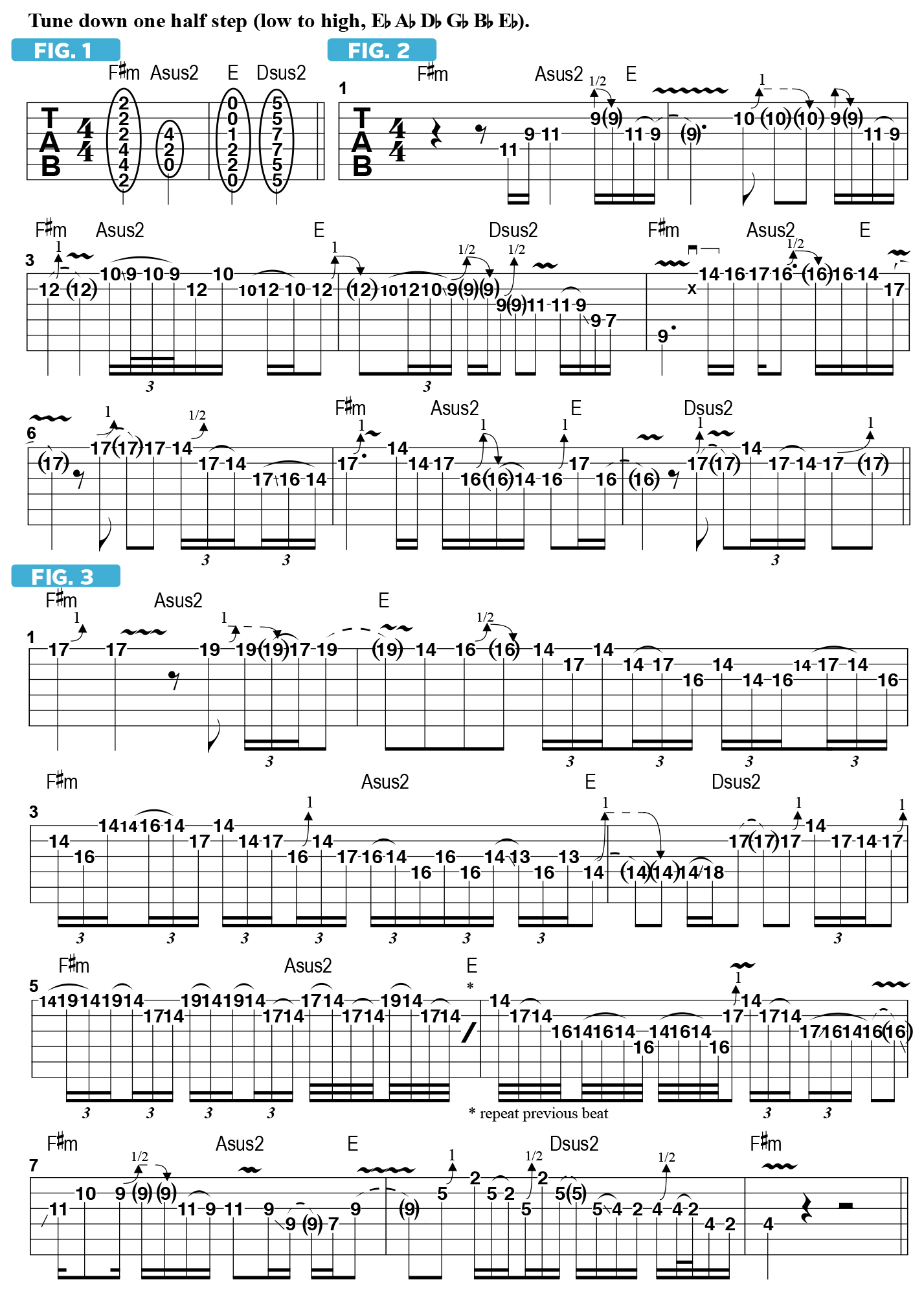More Methods for Constructing Powerful, Expressive Solos
Judas Priest's Richie Faulkner teaches you how to develop powerful solos that contain your own melodic touch.
Last month, I discussed some of the ways in which I might draw inspiration from my many guitar heroes when crafting an original solo. I have no problem wearing my influences on my sleeve and will always find great inspiration in the playing of Jimi Hendrix, Glenn Tipton, Randy Rhoads, Michael Schenker and others. I learned the language of guitar soloing from these great payers, and it is my job to find the way to use my acquired vocabulary to make personal statements of my own, as it is yours and every other guitar player’s, as well.
In learning from these players, I’ve discovered many specific techniques, some of which they share in common and others that are distinct to each of them. All of these things have helped me to discover my own voice. For me, touch and attack are as essential as phrasing, speed, economy and flash.
FIGURE 1 presents a repeating chord progression and rhythm pattern in the key of F# minor that I solo over in FIGURES 2 and 3. In FIGURE 2, the chords are allowed to ring and the approach to soloing is more melodic and less aggressive. In FIGURE 3, I ramp up the intensity by making the rhythm part more active and the soloing faster and more complex. In this way, a story is being told and continues to build throughout the course of the solo.

In FIGURE 2, I begin on on my guitar’s bridge pickup, with the volume turned down a bit. Through bars 1 and 2, my approach is to play as melodically as possible, akin to the way a singer would phrase a melody. The vibratos, bends and pull-offs add a lot of expression to the lines. In bars 3 and 4, the phrasing becomes just a bit more complex, with some quick 16th-note and 32nd-note triplets thrown in as melodic “ornaments.” These ornamental-type phrases straddle the line between a classical-like Ritchie Blackmore approach and the bluesier rock of Schenker. Through these first four bars, I remain within a one-octave range, and in bar 5, I open it up a bit by jumping up to the next higher octave, where I stay through the remainder of the eight-bar solo.
At the start of FIGURE 3, which represents the next eight bars of the solo, I play high bends and vibratos, followed by much more complex, note-y lines. Many of the phrases are built from different permutations of 16th-note triplets; play through them slowly and carefully, and once you have nailed them down, feel free to add your stamp and reconfigure them in your own personal way.
Richie Faulkner has been a member of legendary U.K. heavy metal band Judas Priest since 2011. Their 2018 album, Firepower, became the band's highest-charting album ever in the U.S.
Get The Pick Newsletter
All the latest guitar news, interviews, lessons, reviews, deals and more, direct to your inbox!
“There are so many sounds to be discovered when you get away from using a pick”: Jared James Nichols shows you how to add “snap, crackle and pop” to your playing with banjo rolls and string snaps
Don't let chord inversions bamboozle you. It's simply the case of shuffling the notes around







![Joe Bonamassa [left] wears a deep blue suit and polka-dotted shirt and plays his green refin Strat; the late Irish blues legend Rory Gallagher [right] screams and inflicts some punishment on his heavily worn number one Stratocaster.](https://cdn.mos.cms.futurecdn.net/cw28h7UBcTVfTLs7p7eiLe.jpg)


